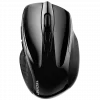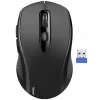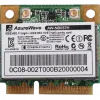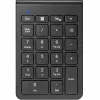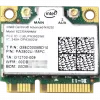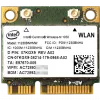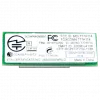Bluetooth 3.0 + HS
Version 3.0 + HS of the Bluetooth Core Specification was adopted by the Bluetooth SIG on 21 April 2009. Bluetooth v3.0 + HS provides theoretical data transfer speeds of up to 24 Mbit/s, though not over the Bluetooth link itself. Instead, the Bluetooth link is used for negotiation and establishment, and the high data rate traffic is carried over a colocated 802.11 link.
The main new feature is AMP (Alternative MAC/PHY), the addition of 802.11 as a high-speed transport. The high-speed part of the specification is not mandatory, and hence only devices that display the "+HS" logo actually support Bluetooth over 802.11 high-speed data transfer. A Bluetooth v3.0 device without the "+HS" suffix is only required to support features introduced in Core Specification Version 3.0 or earlier Core Specification Addendum 1.
- L2CAP Enhanced modes
- Enhanced Retransmission Mode (ERTM) implements reliable L2CAP channel, while Streaming Mode (SM) implements unreliable channel with no retransmission or flow control. Introduced in Core Specification Addendum 1.
- Alternative MAC/PHY
- Enables the use of alternative MAC and PHYs for transporting Bluetooth profile data. The Bluetooth radio is still used for device discovery, initial connection and profile configuration. However, when large quantities of data must be sent, the high-speed alternative MAC PHY 802.11 (typically associated with Wi-Fi) transports the data. This means that Bluetooth uses proven low power connection models when the system is idle, and the faster radio when it must send large quantities of data. AMP links require enhanced L2CAP modes.
- Unicast Connectionless Data
- Permits sending service data without establishing an explicit L2CAP channel. It is intended for use by applications that require low latency between user action and reconnection/transmission of data. This is only appropriate for small amounts of data.
- Enhanced Power Control
- Updates the power control feature to remove the open loop power control, and also to clarify ambiguities in power control introduced by the new modulation schemes added for EDR. Enhanced power control removes the ambiguities by specifying the behaviour that is expected. The feature also adds closed loop power control, meaning RSSI filtering can start as the response is received. Additionally, a "go straight to maximum power" request has been introduced. This is expected to deal with the headset link loss issue typically observed when a user puts their phone into a pocket on the opposite side to the headset.
Ultra-wideband
The high-speed (AMP) feature of Bluetooth v3.0 was originally intended for UWB, but the WiMedia Alliance, the body responsible for the flavor of UWB intended for Bluetooth, announced in March 2009 that it was disbanding, and ultimately UWB was omitted from the Core v3.0 specification.
On 16 March 2009, the WiMedia Alliance announced it was entering into technology transfer agreements for the WiMedia Ultra-wideband (UWB) specifications. WiMedia has transferred all current and future specifications, including work on future high-speed and power-optimized implementations, to the Bluetooth Special Interest Group (SIG), Wireless USB Promoter Group and the USB Implementers Forum. After successful completion of the technology transfer, marketing, and related administrative items, the WiMedia Alliance ceased operations.
In October 2009 the Bluetooth Special Interest Group suspended development of UWB as part of the alternative MAC/PHY, Bluetooth v3.0 + HS solution. A small, but significant, number of former WiMedia members had not and would not sign up to the necessary agreements for the IP transfer. The Bluetooth SIG is now in the process of evaluating other options for its longer term roadmap.
